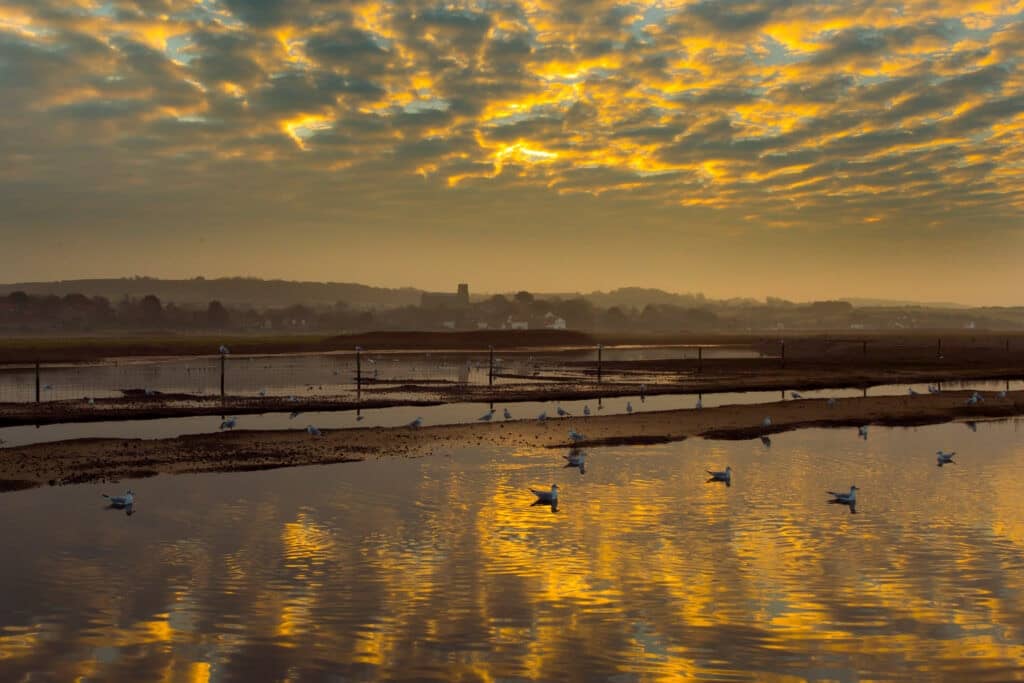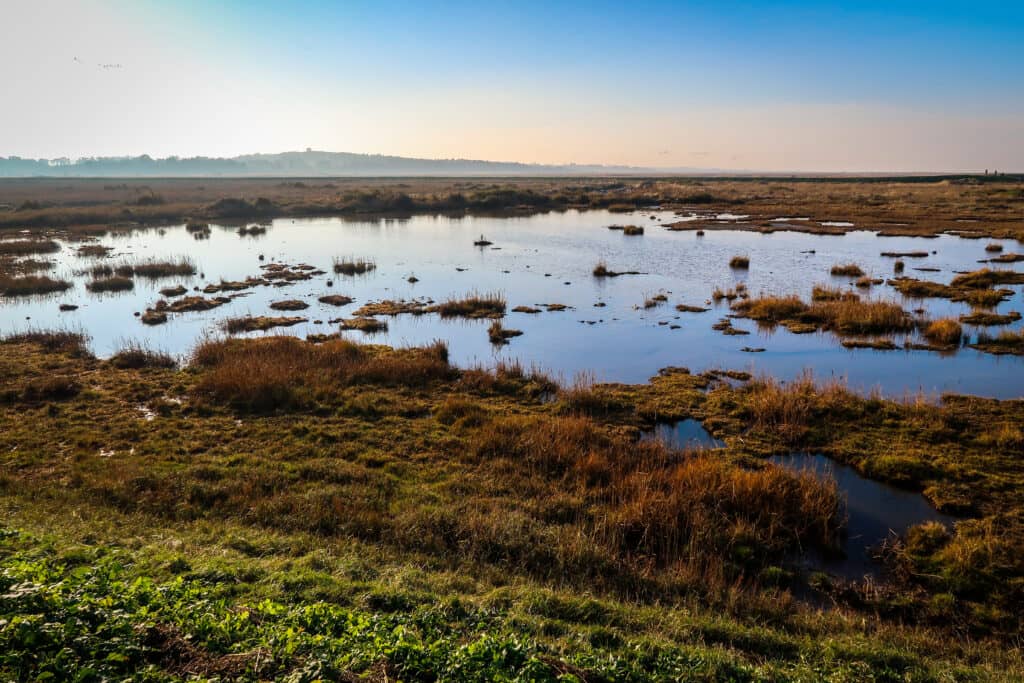There’s something about a winter afternoon in Salthouse that tugs the heart. Perhaps its the pale coastal light pouring through church windows, or smell of woodsmoke from cottages near the Heath. Maybe it’s the Heath itself, its wildness and sense of ancient lives whose stories are held by the earth, just beyond our sight.
Salthouse Heath was formed by melting glaciers thousands of years ago and is part of the geological Cromer Ridge. The rich mosaic of dry acid heath and grassland, fragrant gorse and broad-leaved woodland also guards a wealth of archaeological treasures. There are 11 scheduled monuments and a Bronze Age cemetery. And the remains of a World War II radar station to the north of the heath.
Heathland once defined much of Norfolk, yet is now a rare habitat. The 99-hectares of dry coastal heathland at Salthouse is one of the last remaining examples. Stand on this escarpment and drink in the stunning panorama of marsh, water, land and sea. It’s one of the most splendid views in Norfolk. From Cley Marsh Visitor Centre head towards the East Bank. Cross the coast road, follow the path through Walsey Hills, up past Great Hulver Hill and continue to Bridgefoot Lane. Turn left until you meet the path across onto Bard Hill, then head across the heath east towards Bloomstile Lane and just follow the road as it saunters down to Salthouse village where The Dun Cow pub will have the fire lit and a welcome waiting.

